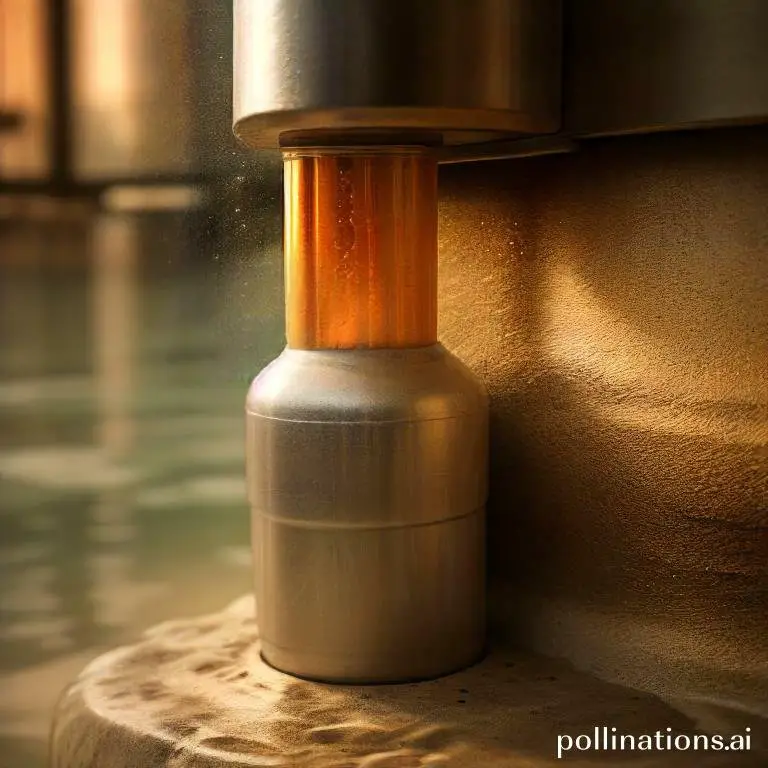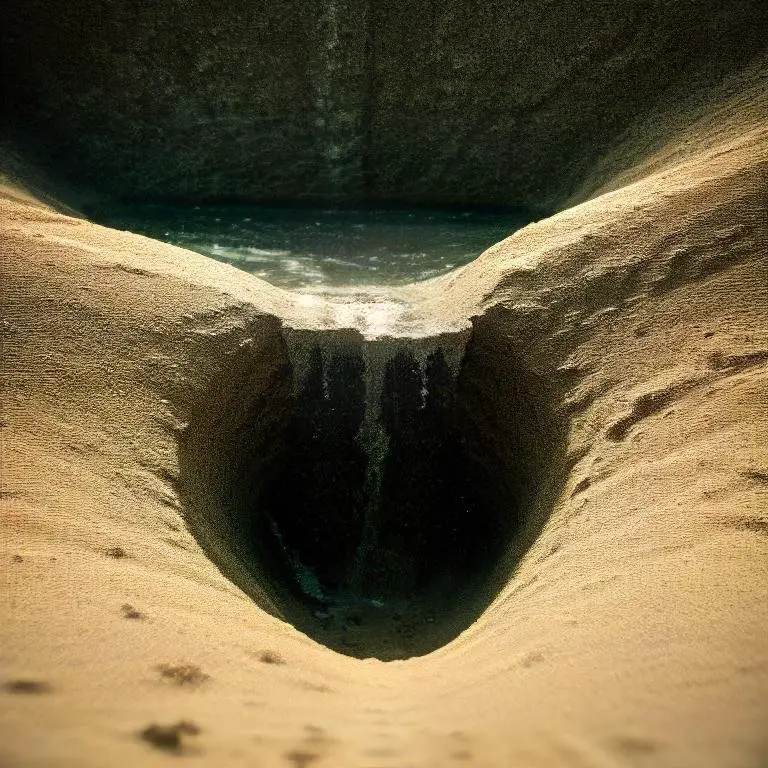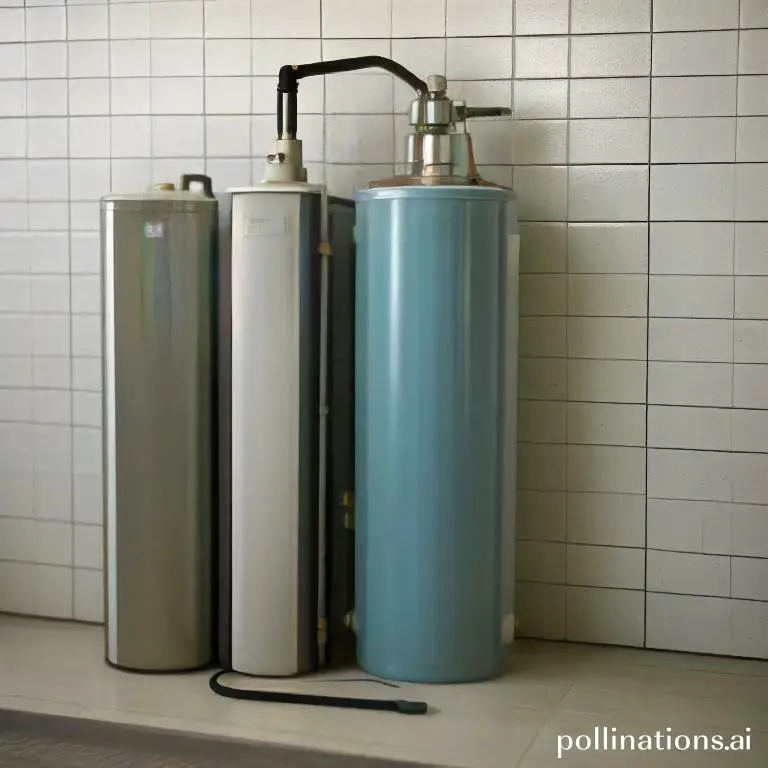
II. The sediment can act as an insulator, reducing the heating element’s ability to transfer heat to the water.
III. Regular maintenance and cleaning of the heating element can help prevent sediment buildup and prolong the lifespan of the water heater.
Sediment buildup can significantly affect the performance of your water heater’s heating element. Over time, minerals and debris can accumulate at the bottom of the tank, creating a layer of sediment that insulates the heating element and reduces its efficiency.
This can lead to longer heating times, increased energy consumption, and even premature failure of the element. Regular maintenance, such as flushing out the tank to remove sediment, is crucial to ensure optimal performance and prolong the lifespan of your water heater.
Apprehending Sediment Buildup
1. What is sediment buildup?
Sediment buildup refers to the accumulation of solid particles or debris that settle at the bottom of a water heater tank over time. These particles can include minerals, dirt, sand, or rust.
This buildup occurs due to the natural process of water heating. As water is heated, dissolved minerals and impurities separate from the water and settle at the bottom of the tank. Over time, this sediment can layer and reduce the efficiency of the water heater.
Example: Sediment buildup can be compared to the accumulation of sand at the bottom of a river, gradually hindering the flow of water.
2. Causes of sediment buildup in water heaters
Sediment buildup can be caused by various factors:
- Hard Water: Water with a high mineral content, such as calcium and magnesium, is more prone to sediment buildup.
- Old Plumbing: Aging pipes or plumbing systems can contribute to sediment accumulation.
- Lack of Maintenance: Neglecting regular maintenance, such as flushing the tank, can lead to sediment buildup.
Example: Similar to how neglecting regular car maintenance can result in engine issues, not maintaining a water heater can lead to sediment buildup.
3. Signs of sediment buildup in water heaters
Identifying signs of sediment buildup is crucial to maintain the optimal performance of your water heater:
- Noisy Operation: If you hear rumbling or popping sounds coming from your water heater, it may indicate sediment buildup.
- Decreased Efficiency: Sediment can reduce the efficiency of your water heater, resulting in longer heating times or insufficient hot water.
- Increased Energy Consumption: A water heater with sediment buildup requires more energy to heat the water, leading to higher energy bills.
Example: Just like a clogged pipe can cause water to drain slowly, sediment buildup can affect the efficiency and performance of your water heater.
| Causes of Sediment Buildup | Effects of Sediment Buildup |
|---|---|
| Hard water | Noisy operation |
| Old plumbing | Decreased efficiency |
| Lack of maintenance | Increased energy consumption |
Impact of Sediment on Heating Element
Sediment buildup on a heating element can have detrimental effects on its efficiency and performance. Absorbing how sediment affects the heating element is crucial in ensuring its longevity and optimal functioning.
1. How sediment affects heating element efficiency
Sediment, such as mineral deposits or debris, can accumulate on the surface of a heating element over time. This layer of sediment acts as an insulator, preventing efficient heat transfer from the element to the surrounding medium. As a result, the heating element requires more energy and time to reach the desired temperature, leading to increased power consumption and reduced efficiency.
2. Damage caused by sediment buildup on heating element
Sediment buildup can also cause physical damage to the heating element. The accumulation of sediment creates uneven heat distribution, causing localized hotspots on the element. These hotspots can lead to overheating, warping, or even complete failure of the heating element. Additionally, the presence of sediment can corrode the surface of the element, further compromising its structural integrity and performance.
3. Cost of repairing or replacing heating element due to sediment buildup
The cost implications of sediment buildup on a heating element can be significant. If the sediment accumulation is not addressed promptly, it can cause irreversible damage, necessitating the replacement of the entire heating element. The cost of a new heating element, along with the associated labor and installation expenses, can be a substantial financial burden. Regular maintenance and cleaning to prevent sediment buildup can help avoid these costly repairs and replacements.
Preventing Sediment Buildup
Sediment buildup in water heaters can lead to various issues, including reduced efficiency and damage to the tank. To ensure the longevity and optimal performance of your water heater, it is essential to take preventive measures to minimize sediment accumulation. Here are some effective methods:
1. Regular Flushing of Water Heater Tank
Flushing your water heater tank regularly is an essential step in preventing sediment buildup. Over time, minerals and debris can settle at the bottom of the tank, forming sediment layers. Flushing the tank helps remove these sediments and maintains the efficiency of the heater. To flush the tank:
- Turn off the power supply or gas to the water heater.
- Connect a hose to the drain valve at the bottom of the tank.
- Place the other end of the hose in a suitable drainage area.
- Open the drain valve and allow the water to flow out until it runs clear.
- Close the drain valve and refill the tank.
2. Installation of a Sediment Filter
Installing a sediment filter in your water supply line can help trap and remove particles before they enter the water heater. This filter acts as a barrier, preventing sediment from reaching the tank and reducing the chances of buildup. Regularly cleaning or replacing the filter ensures its effectiveness in sediment removal.
3. Use of a Water Softener
Hard water contains high levels of minerals, such as calcium and magnesium, which contribute to sediment buildup. Using a water softener helps remove these minerals, reducing the formation of sediment in the water heater tank. A water softener system replaces the minerals with sodium ions, preventing scale formation and extending the lifespan of your water heater.

Flushing Your Water Heater
Your water heater is an essential component of your home’s plumbing system, providing you with hot water for bathing, cooking, and cleaning. Over time, sediment and mineral deposits can accumulate in the tank, reducing its efficiency and potentially causing damage. Flushing your water heater regularly is crucial to maintain its performance and prolong its lifespan.
1. Tools Needed for Flushing Water Heater
Before you begin the flushing process, gather the necessary tools to ensure a smooth and efficient operation. You will need:
- A garden hose
- An adjustable wrench
- A bucket or a drain pan
2. Steps to Flush Your Water Heater
Follow these simple steps to flush your water heater effectively:
- Turn off the power supply to the water heater. For electric heaters, switch off the circuit breaker. For gas heaters, turn the control knob to the “Pilot” position.
- Attach a garden hose to the drain valve located at the bottom of the water heater tank. Place the other end of the hose in a suitable drainage area or a bucket.
- Open the pressure relief valve on the top of the tank to allow air into the system and facilitate a smooth flow of water.
- Open the drain valve and let the water flow out. Be cautious as the water may be hot.
- Once the water runs clear and free of sediment, close the drain valve and remove the hose.
- Close the pressure relief valve.
- Turn on the water supply and fill the tank.
- Switch on the power supply or relight the pilot light.
3. Frequency of Flushing Water Heater
It is recommended to flush your water heater at least once a year to remove any buildup of sediment or minerals. In contrast, if you live in an area with hard water, more frequent flushing may be necessary. Regular maintenance will ensure optimal performance and prevent potential issues in the future.
| Benefit | Frequency |
|---|---|
| Improved Efficiency | At least once a year |
| Extended Lifespan | At least once a year |
| Prevention of Damage | At least once a year |

Installing a Sediment Filter
In this section, we will discuss the process of installing a sediment filter in your home. A sediment filter is an important component of any water filtration system as it helps remove solid particles and debris from your water supply, ensuring cleaner and safer water for you and your family.
1. Types of Sediment Filters
Before we dive into the installation process, let’s first understand the different types of sediment filters available:
- Spun Polypropylene Filters: These filters are made from a tightly spun polypropylene material that effectively traps sediment particles.
- Pleated Filters: Pleated filters have a larger surface area, allowing for greater sediment trapping capacity.
- String Wound Filters: These filters are made by winding a string-like material around a core, providing excellent filtration for larger sediment particles.
2. Installation Process for Sediment Filter
Now that you are familiar with the types of sediment filters, let’s proceed with the installation process:
- Turn off the Water Supply: Begin by turning off the main water supply to your home.
- Locate the Point of Installation: Identify the appropriate location for installing the sediment filter in your water supply line.
- Cut the Pipe: Use a pipe cutter to cut the water supply line at the chosen installation point.
- Attach the Filter Housing: Connect the filter housing to both ends of the cut pipe using appropriate fittings.
- Insert the Filter Cartridge: Open the filter housing and insert the sediment filter cartridge, following the manufacturer’s instructions.
- Secure and Reconnect: Secure the filter housing tightly and reconnect the water supply line.
3. Maintenance of Sediment Filter
To ensure optimal performance of your sediment filter, regular maintenance is essential. Here are some maintenance tips:
- Replace the Filter Cartridge: Depending on the usage and water quality, you may need to replace the sediment filter cartridge every 3-6 months.
- Flush the Filter: Periodically flush the sediment filter to remove accumulated sediment and maintain its efficiency.
- Inspect for Damage: Regularly inspect the filter housing for any signs of damage or leaks and repair or replace as necessary.
Bottom Line
In the realm of sediment impact on water heater heating elements, prevention is key. Regular maintenance and flushing of the tank can help prevent sediment buildup and prolong the life of your heating element. If you do experience issues with your heating element, it may be necessary to replace it. It’s important to choose the right type of heating element for your water heater and to have it installed by a professional to ensure proper function and safety. Remember, neglecting sediment buildup can lead to decreased efficiency, higher energy bills, and even damage to your water heater. Stay proactive and keep your water heater running smoothly for years to come.
Read More:
1. Sediment Removal Impact On Water Heater Lifespan
2. Sediment Flushing Frequency For Well Water Users










